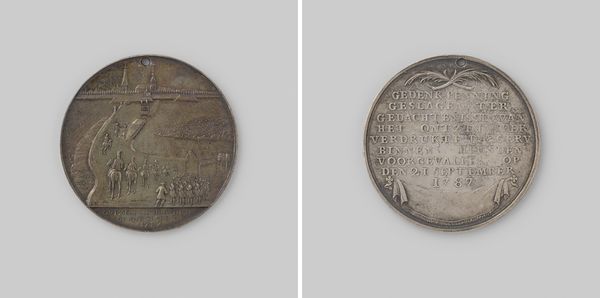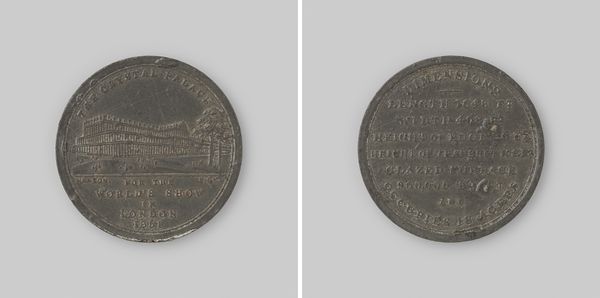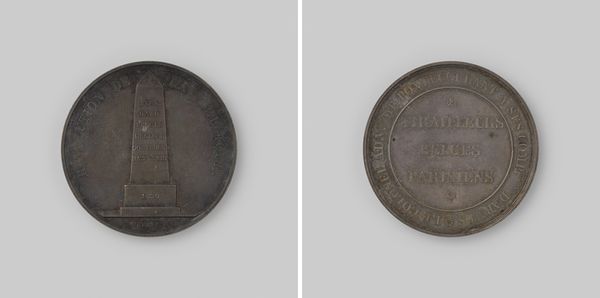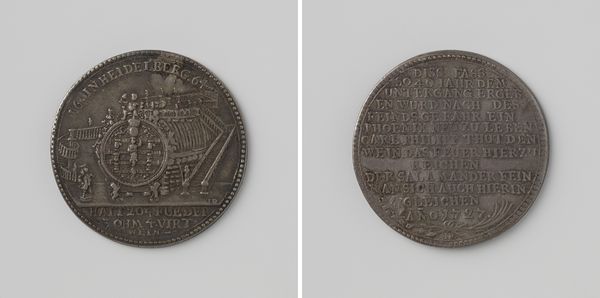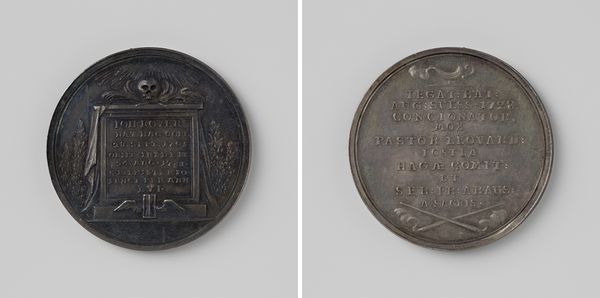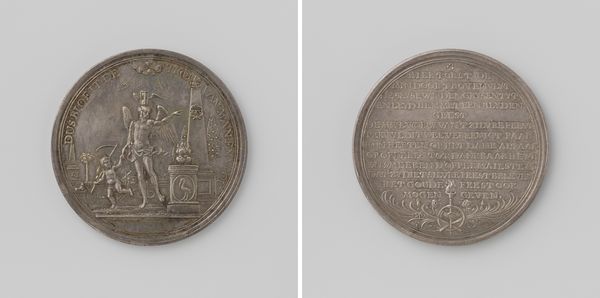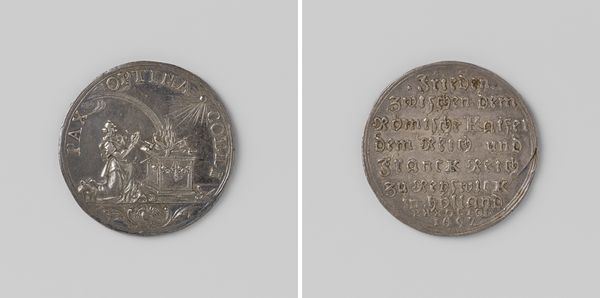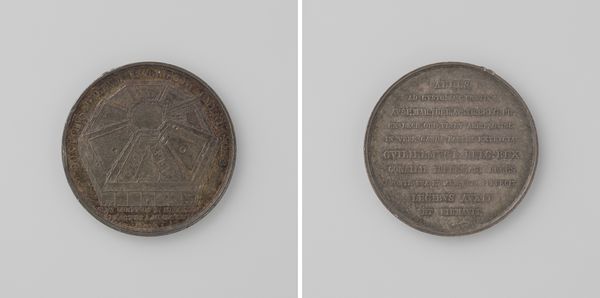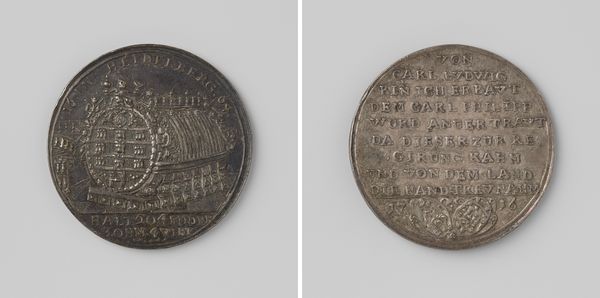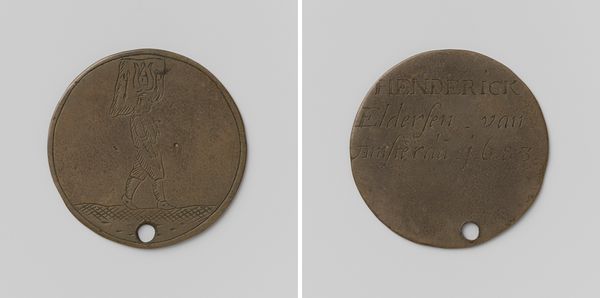
Bezoek van Willem I Frederik, koning der Nederlanden aan het oudheidkundig kabinet van J. d'Huyvetter te Gent, penning geslagen op last van d'Huyvetter 1829
0:00
0:00
drawing, print, metal, engraving
#
portrait
#
medal
#
drawing
#
neoclacissism
# print
#
metal
#
history-painting
#
engraving
Dimensions: diameter 2.7 cm, weight 10.32 gr
Copyright: Rijks Museum: Open Domain
Curator: This commemorative medal, dating back to 1829 and created by Joseph-Pierre Braemt, immortalizes King Willem I Frederik’s visit to J. d'Huyvetter’s antiquities cabinet in Ghent. The choice of metal seems inherently tied to notions of permanence and historical weight, don't you think? Editor: Absolutely, but it’s more than just a pretty keepsake, isn’t it? The inscription on the reverse surely suggests some kind of important commission. How do we unpack its meaning through the material itself, and perhaps understand the purpose behind this visit? Curator: Precisely! We must delve into the circumstances of its production and function. Metalwork like this offered rulers avenues for ideological assertion and manipulation of the public eye, as the creation of enduring political narratives occurred via careful deployment across geographical space, serving the material needs of state governance. What was the role of antiquarianism in constructing a national identity at that time? Editor: It feels like this medal might tell us something about King Willem's relationship with the past – particularly the choice of neoclassical style – that's prevalent in similar artifacts from the period. Can the aesthetic choices reveal the ambitions or insecurities of the early Kingdom of the Netherlands? Curator: A brilliant question! And think of the engraver, Braemt. Who commissioned him and what sort of craft practices were involved? Such dissemination mechanisms helped solidify or negotiate evolving senses of communal Dutch selfhood. Editor: That makes so much sense. By considering it as an object of political power, but also examining its design and craftsmanship, it provides different dimensions of a pivotal time in Dutch history. Curator: Indeed. Reflecting upon the production circumstances surrounding its creation allows insight into wider debates that shaped the early Kingdom of the Netherlands' sociopolitical landscape. We see power relations materialized in this metal disc. Editor: I hadn’t considered how an object could have such complex layers, so thinking through these contexts has completely opened my eyes.
Comments
No comments
Be the first to comment and join the conversation on the ultimate creative platform.
